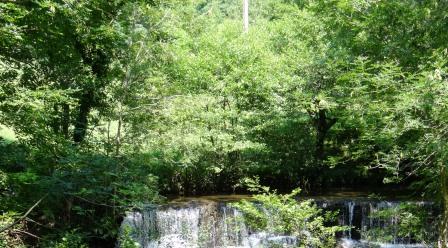Study Figure 1. What are the likely effects of the deciduous forest on the river discharge?
Infiltration and runoff are lower in an area with a dense vegetation cover. Leaves, stems and branches can catch falling rainfall- this is called interception. Some of the water will be stored in the leaves, and evaporate back into the atmosphere. Vegetation also takes up water through its roots and therefore reduces throughflow.
Interception can be high enough for light summer rainfall not to reach the ground. If the rain is heavy, or lengthy, water will run down the leaves (drip), stems (stemflow) and branches, and will either infiltrate or moves as overland flow. Vegetation will slow down the rate at which the water reaches the river.
As the forest is deciduous, the percentage of rainfall intercepted will vary. In winter, the deciduous trees will be bare of leaves and less water will be intercepted and more will reach the channel.
Rainfall intercepted by deciduous woodland: in summer: 25-40%, in winter: 12-15%.
Interception usually results in a net loss of water available to the basin hydrological cycle, a decrease of the speed at which water gets to the river and a lower river discharge.




very good answer thank you very much mate god bless u and give u happiness to help me with my homework more in future
what a lad